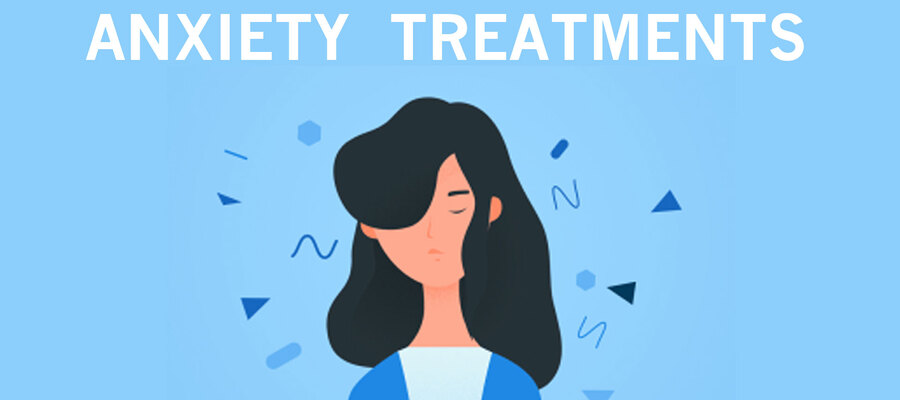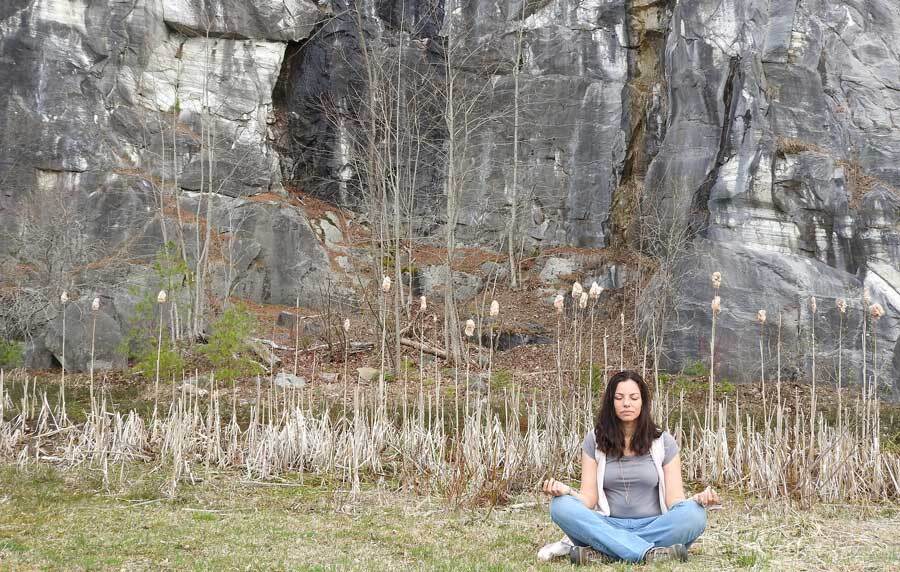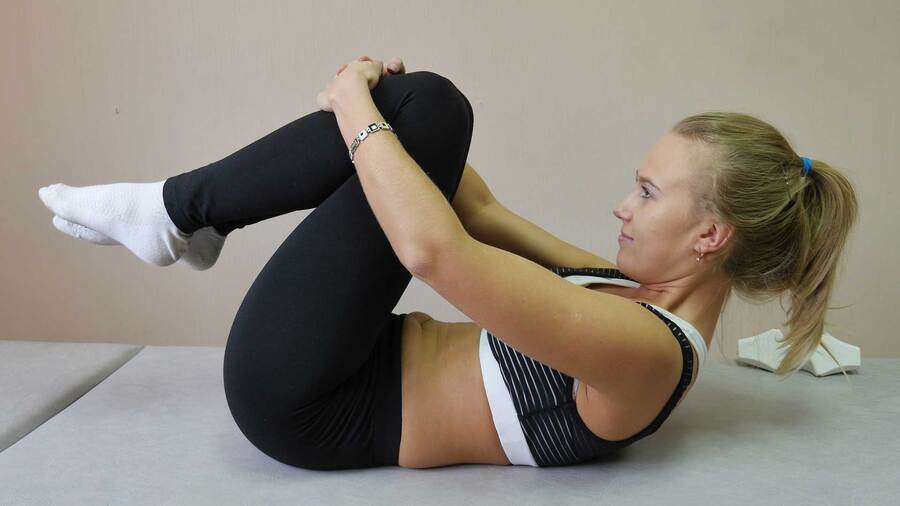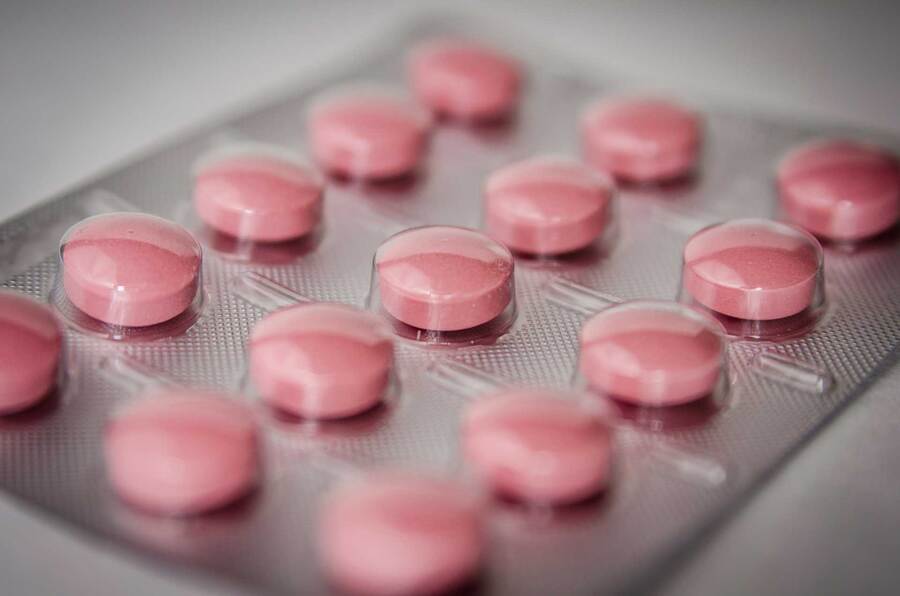
Treatments for Anxiety
When it comes to anxiety, there is really only one question we're all asking: "how do we get rid of it?" There are lots of solutions. In this article, I will give you them all: in our research, we found 96 of them worth mentioning.
Different ones work for different people, so it is impossible to say which one is perfect for you.
I will go into as much detail as I can. However, for a more detailed breakdown of the most effective therapies, see our book, Technical Anxiety: The Complete Guide To What Is Anxiety And What To Do About It.
Bear in mind that this page lists everything. That means some of the treatments may only be loosely related to anxiety, hard to access or lacking scientific evidence. So proceed with caution if you decide to pursue one of the lesser known options.
Therapy
Cognitive therapy
Originally developed by Aaron T. Beck, the idea is that we can intervene with our thoughts at a cognitive level. It states that our thoughts, feelings and actions are all connected. If we understand why we have the thoughts we do, we can re-write these patterns to reduce our anxiety.
This model remains accurate. However, cognitive intervention itself works far better when paired with behavioural chances, so cognitive therapy has been replaced by...
Cognitive behavioural therapy (CBT)
CBT pairs the thinking behind cognitive therapy with a behavioural element: we go out and practice the changes that we have learned. This reinforcement of knowledge has proved to be very effective. CBT is the most effective treatment we have for anxiety and depression.
Cognitive behavioural therapy comes up homework. Click here to learn more about it.
Cognitive behavioural therapy for insomnia (CBI-I)
If your anxiety is caused by difficulty sleeping, there is a special form of CBT designed to help you tackle the issue.
Exposure
Also known as systematic desensitisation.
This is the concept of putting ourselves in uncomfortable situations and showing ourselves that they are not dangerous. For example, we may worry about social situations. So we would go to parties and experience the anxiety to show ourselves that it cannot hurt us.
Exposure therapy takes time: you have to keep putting yourself in those situations. And it is very uncomfortable. Therefore, the best way to make it less uncomfortable is to break it down into smaller steps. Creating lots of small manageable steps makes it far easier to complete than the "just go out and do it" approach.
Click here to learn about how to do exposure therapy properly. Exposure is used extensively in CBT.
Flooding
This is an extreme form of exposure therapy where you are overloaded to get quicker results. For example, are you afraid of spiders? Then have a therapist drop a box of spiders on your head. It sounds horrible, and it is.
Counterconditioning
This is a form of exposure therapy used for phobias. Let's say you hate spiders. First, you are taught to relax. Then, the stimulus (spiders, in this case) are gradually introduced. Because you are feeling relaxed, you begin to associate spiders with relaxation rather than panic.
It is best done in a graded way, as with all exposure, and is useful when you find standard exposure techniques too difficult.
Acceptance & Commitment Therapy (ACT)
This takes the idea that we cannot get rid of anxiety and tries to reframe it: "how can we live the life we want to lead without anxiety getting in the way". It urges us to stop trying to eliminate anxiety and wasting energy fighting it. Instead, we should embrace it while at the same time not letting it ruin our lives.
Eye movement desensitisation and reprocessing (EMDR)
This therapy involves a therapist moving their finger backwards and forwards in front of your eyes while you recall memories. It sounds crazy, but there is evidence that it helps to reduce painful memories and symptoms of post traumatic stress disorder (PTSD).
Metacognitive Therapy (MCT)
This proposes the idea that a barrier to therapy is our beliefs about beliefs. These "metacognitions" look at how we think.
For example, we may have the belief that "worrying keeps us safe" or that "we can never control therapy". While we have these meta-beliefs, we are unlikely to change or engage with therapy. Therefore, MCT attempts to remove these metacognitions so that we can then tackle our anxious thoughts effectively.
Dialectical behaviour therapy (DBT)
This is modified form of CBT that is geared towards people struggling with self-harm issues and suicidal thoughts. It may also be useful for treating eating disorders.
Problem-solving therapy
This is a similar to CBT but very focused: it looks at the problems you are experiencing and finding direction solutions to them.
Schema therapy
This is also known as Schema-Focused Cognitive Therapy and is an off-shoot of cognitive therapy. It states that our problems are caused by deeply ingrained beliefs, such as "I'm a failure" and "I am not good enough" and attempts to challenge these.
Mode deactivation therapy
This attempts to build on the work of Aaron T. Beck to look at dysfunctional emotions and cognitive processes and re-write them. It is used to treat children more than adults.
Cognitive analytic therapy (CAT)
This was developed by Anthony Ryle for the National Health Service in the United Kingdom. It was popular with healthcare providers because it is time-limited (runs for a set number of sessions) but is not as popular as CBT.
Rational emotive behaviour therapy (REBT)
This is a form of therapy developed by Albert Ellis and is an off-shoot of CBT. It divides human behaviour into rational and irrational and encourages an acceptance of the irrational while providing interventions that help us re-train ourselves to avoid these patterns.
Focal psychodynamic therapy
This is a long-form therapy, typically delivered over a year, that is primarily used to treat eating disorders that come with related conditions. It states that problems are caused by unresolved childhood conflicts and focuses on exploring those.
Stress inoculation therapy (SIT)
This therapy is most commonly used when anxiety is related to a problem such as drink or drug misuse. The idea is to prepare you for stressful situations, such as the opportunity to relapse, so that you know how to handle the situation and thus are less likely to be overwhelmed.
Integrative therapy
This is not a therapy in itself but involves integrating several therapies together. This is hard to do because the therapists needs to understand both therapies and integration therapy, but can produce positive results when done correctly.
Bright light therapy (BLT)
Sitting someone under a high-powered light has long been used to treat seasonal affectiveness disorder. More recently, a meta-analysis has looked at nine different trials to see it's effect on mood for nonseasonal disorders. It works there, too. It can be effective in 2-5 weeks of daily sessions and how long these will take depends on how powerful the light is.
Eclectic therapy
This is similar to integrative therapy except that it pulls ideas and strategies from all other therapies, not just the selective few that are being integrated.
Biofeedback
The idea behind this is to provide you with feedback on what your body is doing. Thus, you can see the positive changes you are making with techniques like deep breathing, and therefore eliminate needing faith that they are going to work (because you can see them working).
This has significant potential because a major blocker to effective therapy is whether we think it will actually work. So far, the evidence suggests this could be a promising treatment.
Electroconvulsive therapy (ECT)
It sounds like something out of a 1960s horror movie. And it kind of is: it's the new name for electroshock therapy. ECT is sending electrical pulses through your brain to trigger seizures, with the hope that it will fix your anxiety, depression, schizophrenia, or any other mental health problem.
The crazy thing is, though, is that it works. However, relapse rates are high, so it only seems to fix things in the short-term. It is only used in a hospital situation for treatment-resistant problems because there is a significant chance it will damage your memory.
Group therapies
Group therapy
Many other kinds of therapy can be delivered in a group situation. The advantage of this is that you receive support and a feeling of loyalty to the other group members, helping and motivating each other through the programme.
Art therapy
This uses creative expression to help people improve their mental health. Typically, it is not used specifically for anxiety but is more widely used for general mental health issues.

Adventure therapy
This is a form of therapy where a group will undertake outdoor activities such as hiking or wilderness expeditions. The idea is to help people build trust, increase self-esteem and self-worth and re-focus on minds outwards away from our negative thoughts and towards helping others.
Dance movement therapy
Also known simply as dance therapy in the United States, this uses expression through dance to improve one's mental wellbeing.
Peer support
A peer support group will typically allow members to help and support each other without a leader or agenda. The group may be run by a facilitator, but this person may not be an expert and is not there to organise any learning, but simply to ensure the meeting runs smoothly.
Enhanced peer support
This is similar to peer support in that it will still be member led. However, the facilitator will be an expert who can advise, clarify and explain any points the group is struggling with.
Nude psychotherapy
I had to drop this one in. The idea is to have non-sexual social nudity. It may improve your wellbeing, but, to be honest, I am not sure I will be trying it anytime soon.
Counselling
Existential therapy
This looks at the big questions in life: the existential ones. Things like "what is the meaning of life" and "what is the point of living".
Humanistic therapy
This looks at you as a whole person and how you can develop your skills and grow.
Interpersonal psychotherapy
This focuses on the relationships you have with friends and family. The idea is that by strengthening these, you will increase your wellbeing.
Person-centred counselling
While many forms of counselling can look to the past, person-centred focuses on how you feel now. There is a strong emphasis on the counsellor providing empathy.
Transactional analysis
This looks at the way we relate to ourselves and does so from three perspectives: that of the parent, the adult and the child.
Skype counselling
Formally known as remote counselling, this is regular counselling but done at a distance, such as over Skype video chat. It has the advantage that you do not have to leave home to attend sessions.
Co-counselling
This is a form of peer counselling in which you split sessions equally with your partner, and taking it in turns to act as the counsellor and the patient. There is no evidence that it works.
Mindfulness
Mindfulness is the idea that we should live in the moment. Rather than allow our minds to run free over worrying about the future, we should ground it in the present.
Mindfulness meditations
These are typically guided audio exercises that will get you to do a specific task, such as focusing on bodily sensations, the stimuli around you or simply on your own thoughts.
These are very accessible as you can access such meditations over the internet via your mobile phone: all you need is a quiet space to do the exercise.
Click here to see a list of our free mindfulness meditations.

Mindfulness-based cognitive therapy (MBCT)
Is a more structured version of mindfulness. It uses mindfulness meditations but typically takes place as a course with a therapist or in a group setting.
Mindfulness-based stress reduction (MBSR)
This is a form of mindfulness developed Jon Kabat-Zinn which uses a combination of mindfulness meditation, body awareness, and yoga to reduce stress and increase relaxation.
Lifestyle
There are many different aspects of our lifestyles that affect our mood. I discuss this in detail in our book Do More, Worry Less: Small Steps To Reduce Your Anxiety. Below, I have outlined the major topics that have an effect.
Exercise
Exercising is not just good for the body. It is good for the mind, too. In fact, it is essential to keeping a healthy mind. Increasing the amount of exercise will lift your mood and make you feel better.

Going outside
Exercise doesn't have to involve huffing and puffing away on a treadmill. In fact, a walk that is done outdoors could be better than a run indoors. Being outside and getting some valuable Vitamin D is important for our wellbeing: even if it is always cloudy!
Spending time in nature
Numerous studies have shown that exposing yourself to nature improves your wellbeing. This can be as simple as putting a plant on your desk. But much better to get out there and spend some time in the countryside, or just a local park.
Diet
What we put into our bodies has a big effect on our mood. It is considered a tier one factor when it comes to mental health. Eating a wholesome and nutritious diet will lift our mood, reduce mood swings and increase our enjoyment of life. Learn more about foods to eat and foods to avoid.
Reducing sugar
Sugar gives you instant energy. This gives you a high, but it also means it is followed by a low. Reducing the amount of sugar you consume could help stabilise your mood.
Hydration
How much water we drink affects our mental health. Therefore, we can often improve how we feel, just by making sure we drink enough water. Carrying a reusable water bottle around with you is a great way to remove any barriers to staying hydrated.
Caffeine moderation
Caffeine is a stimulant which means it will make you more on edge than usual. There are some small withdrawal effects (typically mild headaches) if you drink a lot, but these ware off in a matter of days.
Alcohol moderation
Changing the amount of alcohol we consume can affect our anxiety. Many people find that high levels of alcohol consumption can decrease their mood.
Smoking cessation
Smoking seems to correlate with anxiety. Smokers have higher levels of anxiety than non-smokers. Whether stopping smoking will reduce your anxiety is unclear. However, given it is so beneficial for your health anyway, it may be worth trying.
Drug moderation
Illicit drugs have been shown to increase symptoms of anxiety and depression. Reducing, or cutting out, such drugs can make us feel better.
Sleep
Human adults need 7-9 hours of sleep per night. Without it we feel awful, our cognitive abilities are impaired, and we find it more difficult to function. How much sleep works best for you will vary person to person, but it should be somewhere within that range. Having a proper sleep pattern, dealing with sleep disruption and insomnia issues and giving yourself enough time to get a full night's sleep in will improve your mood.
Relaxation
Willpower is a limited resource. We only have so much of it. However, when we spend time relaxing, we rebuild our supply. This allows us to face the more challenging tasks we have to do and feel calmer.
Personal growth
Learning is essential to a healthy mind. It gives us something to focus on and keeps our brains in tune. Whether this is academic learning, a new skill or hobby, or working on developing relationships, we need to keep growing in one form or another to maintain a healthy mind.
Relationships
The one factor that has the largest effect on our wellbeing and longevity is relationships. Building strong and meaningful relationships is essential to a healthy and happy life. We don't need lots: just a few people we are truly close to will provide the benefit.
Relationships are also hard, and they take work. But that time is worth investing to access the benefits you obtain.
Community
Joining in a community group or participating in the wider community can have a significant effect on our wellbeing. It reminds us that there is something bigger than ourselves and brings together many other benefits such as going outside, meeting people, building relationships and learning new skills.
Medication
Selective serotonin reuptake inhibitors (SSRIs)
This is the most common form of medication prescribed for anxiety. The idea behind them is that anxiety and depression are caused by a serotonin imbalance and attempts to restore that. Whether this is the case or not is debatable. However, clinical trials show that SSRIs are very effective in treating anxiety.
There are a variety of different versions and brand names, but the three most common are citalopram, sertraline and prozac.

Serotonin-noradrenaline reuptake inhibitors (SNRIs)
These are similar to SSRIs, but they also affect your levels of norepinephrine. Some people respond better to SNRIs than SSRIs.
Common SNRIs are duloxetine and venlafaxine.
Noradrenaline and specific serotonergic antidepressants (NASSAs)
This is another type of drug that is similar to SSRIs. They share similar side-effects. The most common NASSA is mirtazapine.
Tricyclic antidepressants (TCAs)
These were popular when they were first developed in the 1950s. However, they have since been replaced by SSRIs because they are just as effective and cause fewer side effects. They are occasionally still prescribed when people fail to respond to other medications.
Tetracyclic antidepressants (TeCAs)
These are an updated version of TCAs that are rarely used today.
Monoamine oxidase inhibitors (MAOIs)
These are a form of antidepressant. They are rarely used because they are very dangerous: there are lots of other medications and dietary supplements that can interact with them, so proper supervision with a doctor is essential.
Reversible inhibitor of monoamine oxidase A
These are similar to MAOIs but slightly less dangerous. They are still considered a last resort, however, because of the number of interactions they have with other substances.
Beta-blockers
These are used for a variety of medical purposes as they reduce the release of adrenaline into the body and therefore keep your heart calmer. This can help reduce anxiety but also limits the exercise you can do while taking them. They can be taken either regularly on an ad-hoc basis: discuss this with your doctor.
Benzodiazepines
These drugs, often shortened to "benzos", are essentially tranquilisers. They have a powerful relaxing affect on the body and are very effective at treating anxiety.
However, because they are highly addictive and the body builds up a tolerance in a short amount of time, they should not be prescribed for more than a few days at a time.
The most common benzodiazepine is diazepam, which is better known as valium.
Nonbenzodiazepines
These drugs, also known as "z-drugs", have similar effects and side effects to benzodiazepine. They are given a different label because they are chemically different. However, from the perspective of a user, there is little difference.
Pregabalin
This is a drug that is used to treat epilepsy but also has evidence to support its use for anxiety. Side effects are common, but not considered as bad as SSRIs.
Lithium
Lithium is used as a mood stabiliser in the treatment of bipolar disorder. There is some evidence it could help with anxiety. Learn more about lithium.
Placebos
These are pills with no actual medicine in. They are fake sugar pills designed to make people feel better. However, there is one very odd characteristic of them: they work. Just taking a pill can often make you feel better.
It's mad, but it's true. This is why medical drug tests always compare new drugs to placebos: so that we know it is the drug that is making people better and not just the act of taking a drug.
With a placebo, it is all in the mind. But so is anxiety.
Cannabidiol (CBD)
Cannabidiol is one of the active ingredients in the drug cannabis. Early evidence suggests that it could be useful in treating anxiety because it counteracts the tetrahydrocannabinol (THC) that causes disordered thinking in cannabis itself, and so could help to do the same in a brain not on cannabis. Learn more about cannabidiol.
Self-help
Books
There are many good books out there on dealing with anxiety. Some provide specific techniques and coping mechanisms while others tell stories and provide reassurance. I'm biased, obviously, but I highly recommend my own books!
Online programmes
There is a range of online tools and CBT-style programmes that you can access, both free and paid.
Mobile phone apps
There are dozens of different mobile apps for both iOS and Android that cover a range of tropics including CBT, mindfulness, relaxation and breathing exercises.
Diet & Supplements
Tryptophan
This is a chemical used in the production of serotonin. Therefore, eating foods high in tryptophan could improve your mood. Good sources are bananas, walnuts and turkey. Learn more about tryptophan.
Iron
Iron helps with learning and memory, and low levels of iron are correlated with mental health difficulties. Good sources of iron include meat, beans, nuts and kale. Learn more about iron.
Vitamin D
Vitamin D helps boost our mood. Good sources are oily fish, liver and eggs. Learn more about Vitamin D.
Vitamin B-12
Not getting enough Vitamin B-12 can leave you feeling tired, lacking energy, or even depressed. Offal and shellfish are the best sources. Learn more about Vitamin B-12.
Omega 3
Lack of Omega-3 may contribute to depression and OCD. Good sources are oily fish, shellfish and rapeseed. Learn more about Omega-3 fatty acids.
Potassium
There is limited evidence that low levels of potassium in the body can impact your mental health. Learn more about potassium.
Natural remedies
St John's wort
This is a herbal remedy you can buy over the counter. It seems to have a positive effect on mild and moderate depression. This is on the borderline of alternative medicine as if more studies back up the claims, it could become mainstream.
Peppermint tea
This contains menthol, which is a natural muscle relaxant. Therefore, the theory is that drinking it will help you relax and feel less stressed. It has also been associated with an increased chance of miscarriage in pregnant women.
Chamomile tea
This may help reduce anxiety and help you sleep better, too.
Green tea
May provide a variety of health benefits and make you feel less stressed. The NHS say the evidence is inconclusive but that it is no more harmful than regular tea, so switching to green tea could be a good way to go.

Lavender
Smelling lavender oil may help reduce anxiety and is side effect free.
Valerian
Valerian root seems to help people sleep better and may or may not improve anxiety. More research is needed.
Passionflower
This is another traditional medicine used to calming stress and improving sleep. It used to be classified as an over-the-counter medicine, but this was withdrawn in the 1970s due to lack of evidence that it did anything. However, it is still available as an unregulated herbal product.
Kava
This is a plant grown in the Pacific Islands. A Cochrane Review concluded that kava might have a small impact on anxiety. However, it is currently illegal to sell in many countries, including the United Kingdom, because it may potentially damage your liver.
Ayahuasca
This is a hallucinogenic brew made by the indigenous people of the Amazon basin for spiritual and healing purposes. One trial looked at whether it could improve mental health and found that it could. However, this is just one trial and did not look at anxiety specifically. But it could be a promising avenue. Learn more about ayahuasca.Alternative medicine
Hypnotherapy
This involves hypothesis, either with a practitioner or using self-hypnosis techniques. A meta-analysis by the University of York found that there was no evidence that it was effective in combatting anxiety.
Meditation
Meditation may be helpful, but a Cochrane review concluded there was not enough evidence to say whether it did reduce anxiety or not. It is overshadowed by mindfulness, which is a more specific form of meditation, that has a large body of evidence behind it.
Yoga
The evidence on whether yoga is beneficial for mental health is mixed. However, many people find it enjoyable, so regardless of evidence, it is probably worth a try.

Pilates
Another physical exercise system, this one developed in Germany. There is no evidence that it can help anxiety. However, it does count as exercise and, as with yoga, you may find that you enjoy it. See our article on the topic.
Progressive muscle relaxation (PMR)
Involves tightening and then releasing your muscles, one by one, working up or down the body. This is designed to help you relax. There is no clear evidence that it provides any benefit, but you may enjoy it.
Neuro-linguistic programming (NLP)
This is a set of techniques developed in the 1970s by Richard Bandler and John Grinder. It is completely discredited pseudoscience and is considered a religious cult by many scientific bodies.
Homoeopathy
This is the biggest load of nonsense you have ever heard of. The idea is that like cures like, but only if you water it down so much that there is none of the original ingredient left. How is this supposed to work? Apparently, water has memory. But it forgets about all the urine it has been in over the years. I don't have enough space to rubbish this here, but you can easily look it up if you so wish.
Acupuncture
This involves sticking tiny needles into your body at so-called energy points. A Cochrane review concluded that it was no more effective than placebo. However, placebo can be powerful, so even though it is nonsense, you may want to give it a go.
Shiatsu
This works on a similar principle to acupuncture but does not use needles. Instead, the practitioner puts their hands on you in a sort of massage. Like acupuncture, there is no evidence that it provides any benefit.
Reflexology
This is another wacky pseudoscience that believes it can cure anything by someone manipulating your foot. There is no medical evidence that it can cure anything at all.
Fidget cubes
These are a craze at time of writing. They make take your mind of anxiety in the short term. However, as they are just a distraction, there is no reason to believe they will reduce your anxiety in the long term.
Conclusion
Solving anxiety is hard: it's not like a bacterial infection where there is one antibiotic for everybody. We are all different, and our sources of anxiety are different. Therefore, it may require you to try a lot of different treatments before you find one that is right for you.
The good news is that there are so many options, so you are unlikely to run out. Staying motivated when many treatments have not yet worked for you is difficult, but it is also worth the reward.
Metadata
Published 19 June 2017. Written by Chris Worfolk.